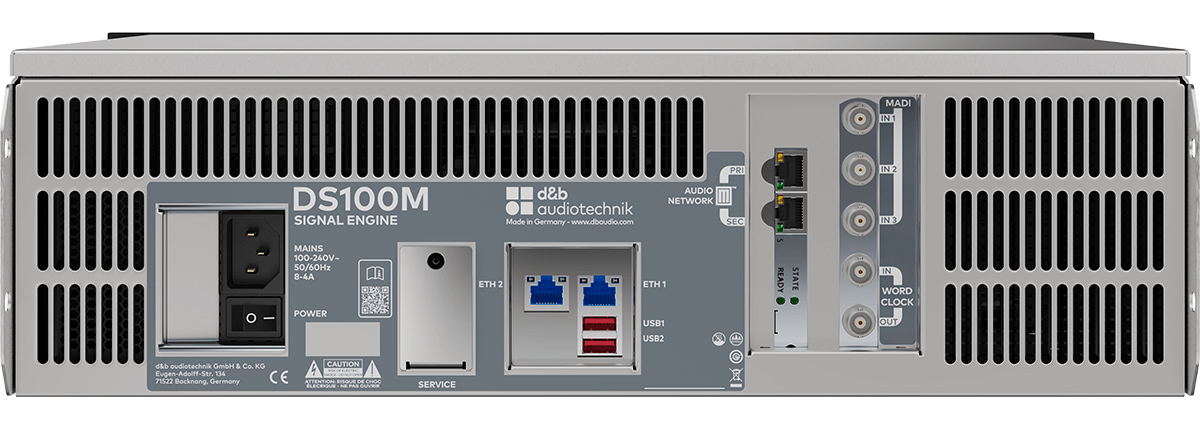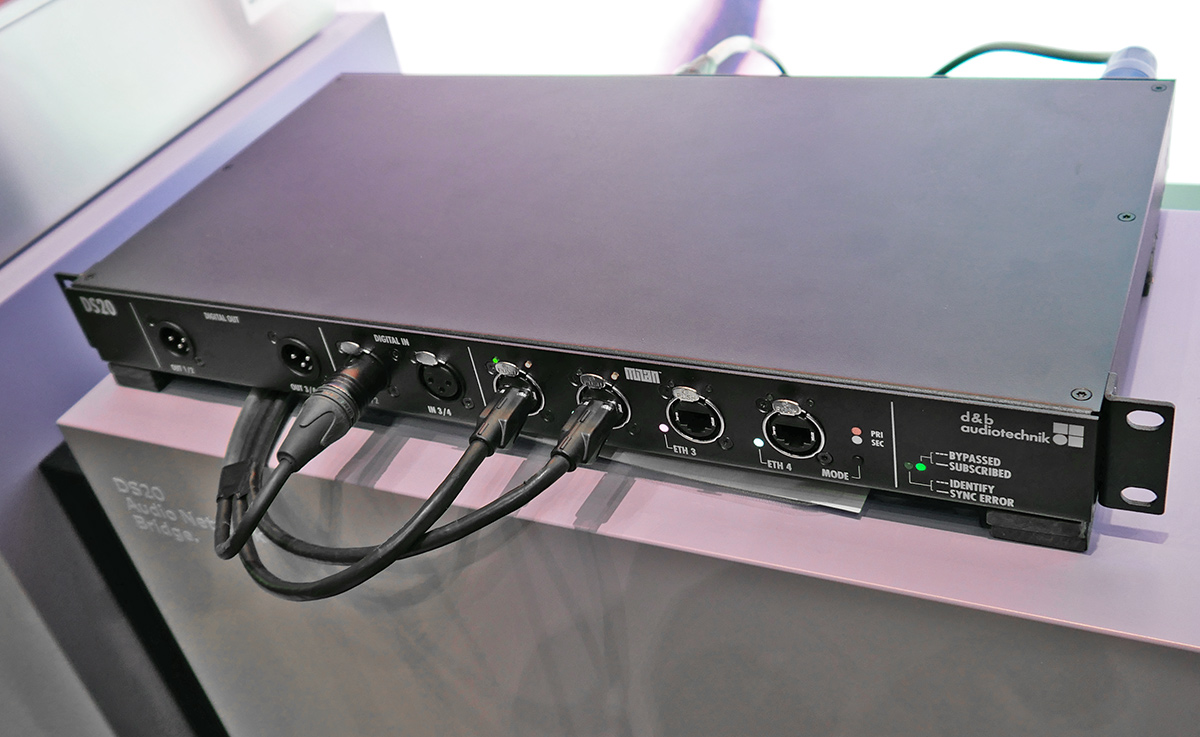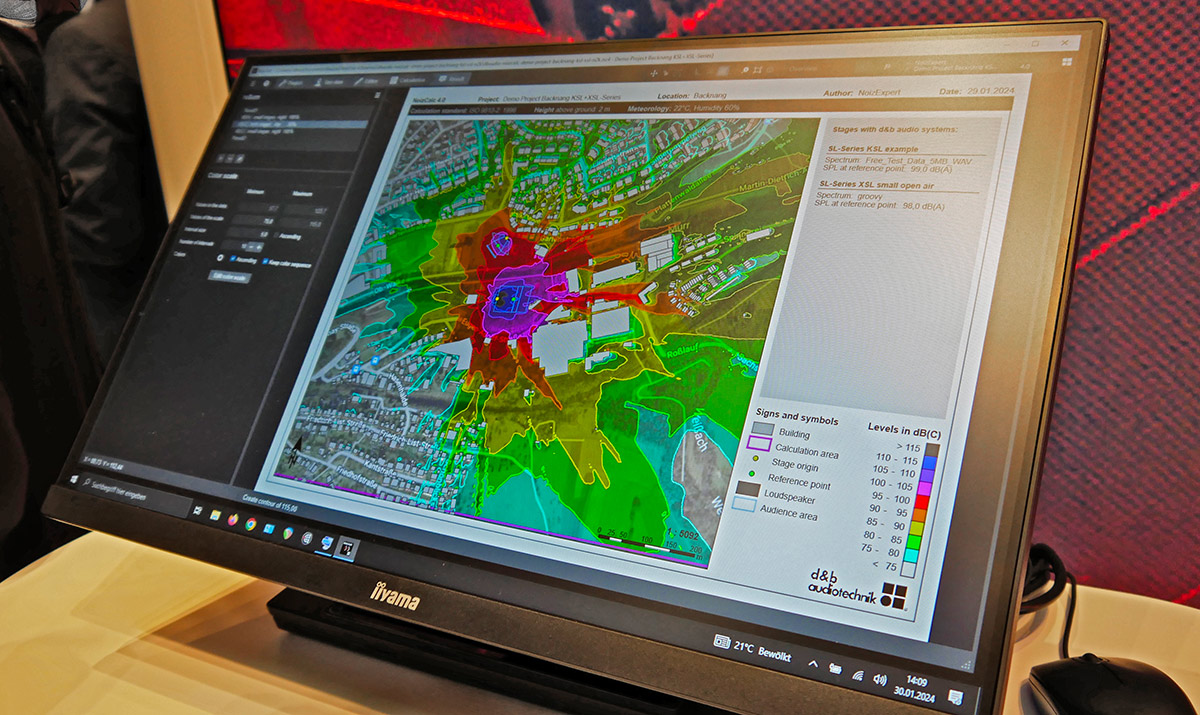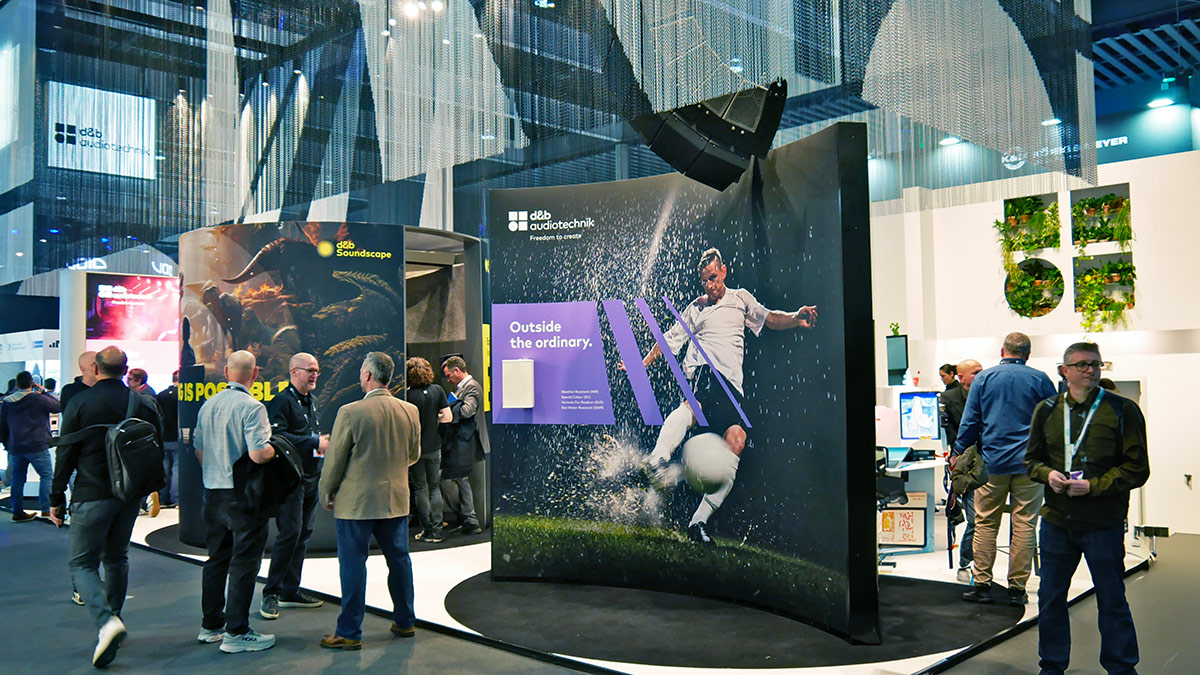Can d&b audiotechnik see farther ahead than we can? Judging by the new products presented at ISE 2024, it certainly seems that way. In this case, we’re talking about electronics and audio networking, with a new range of equipment all of which integrate as standard the Milan AVB network technology.
This is a further affirmation of the company’s desire to facilitate audio networking between sound systems, which seems only logical, given the development of the latest loudspeaker systems in both their traditional and spatialised configurations.
While the Milan network, using AVB technology, offers a number of attractive advantages for sound designers, it is clear that the tools needed to deploy it on a large scale among professionals in the industry have so far been less than convincing. To remedy this, the giants are coming together.
Looking beyond the spirit of competition and motivated by the joint commitment of the companies involved in the AVnu alliance, L-Acoustics and d&b audiotechnik have joined forces to develop a joint software package for controlling a Milan audio network that is tailored to the current needs of pro audio: Milan Controller.

Mathieu Delquignies, Application Support for d&b France, explains: “d&b has been developing Milan AVB products since the DS20 in 2019. We made no secret of our support for Milan and were expecting to see a complete ecosystem emerge. Hive, the current Milan network control software, has been developed for several years almost exclusively by Christophe Calméjane at L-Acoustics, even though it is an open source solution available on GitHub.
“In order to continue its development, we have decided to join forces with L-Acoustics to produce a much more powerful software package that meets the requirements of today’s systems, to be known as the Milan Controller. It should be operational in approximately six months and will remain open source.”
Here are five new d&b products covering the entire signal chain, each incorporating Milan network technology as standard: the DS20 audio network gateway, the DS100M processor and the 40D, D40 and D90 amplifiers. Milan coexists on these units with the other Dante, MADI and AES interfaces, offering system designers all the flexibility they will need in the near future.
But why should we add yet another standard to those that already exist and are working perfectly well? We posed this question to Mathieu Delquignies, who answered with a series of rather serious observations: “First of all, the Milan network uses AVB technology, which has some very interesting features for us.
“The audio streams (and video, if necessary – ed. note) are conserved by the hardware. This guarantees their integrity and saves the designer from having to configure certain parameters such as QoS clock priority, IGMP Snooping or the creation of VLANs to guarantee bandwidth. There’s nothing complex to program, just connect it and it works: less computing, more sound.
“The Milan Controller software will be used to crosspoint, monitor, configure, and route streams and to manage sampling frequencies. Also, with the third-generation gPTP (Generalized Precision Time Protocol) clock protocol, Milan offers precision typically below a microsecond and theoretically down to a nanosecond.
“This guarantees perfect synchronisation of audio streams with a very low and fixed latency, which is quite essential when driving loudspeaker systems directly. Additionally, a CRF Stream clock stream is carried over the network and can be used as a conventional Word Clock reference by compatible equipment such as consoles, processors or preamps.”
Other benefits of the Milan network include transparent redundancy, enabling users to deploy two parallel networks. They will also be able to operate several synchronised sub-systems, at the same or different sample rates, while also sharing the same network infrastructure. It’s also worth noting that lucky Macintosh owners will be able to use the audio streams from the Milan network directly without the need for an additional external interface, since AVB is supported natively within MacOS.
The new D90 amplifier is the future replacement for the famous D80, which is already thirteen years old. It boasts four channels of class D amplification, of 5,400 W at 4 Ω (4 × 2700 W at 8 Ω) each, as well as the ability to manage Milan network streams directly. It incorporates the latest generation of DSPs, with even more headroom to accommodate more processing. It has kept the four AES digital and analogue inputs, as well as a flexible fallback system for transmitting a secondary signal, if necessary.


Remote control and integration into sound systems are of course guaranteed by the d&b ArrayCalc simulation software and the R1 remote control software. Finally, careful attention has been paid to reducing power consumption.



Other products that will be integrated with Milan include the new DS100M processor.
The new unit device will be more powerful than the current DS100, which was introduced in 2018.
Its hardware has evolved, as well as its processors. It will incorporate processing that is identical to that currently used to manage Soundscape spatial sound systems and matrix solutions.

In addition to Milan compatibility, d&b has cleverly added MADI inputs/outputs, increasing its routing possibilities compared to the 64 channels of the DS100 model with Dante.

Depending on the requirements, clock synchronisation can be activated on the Word Clock, the MADI or on the dedicated Milan network clock, known as the CRF stream. With more inputs, the user can select from 128 MADI inputs, 64 Milan inputs, 128 MADI outputs, and 64 MILAN outputs. When used without a licence for spatialised audio applications, the DS100M can be used as a DSP matrix, making full use of all the MADI and Milan inputs and outputs for far greater possibilities.
And to complete the list of product launches, the Milan version of the popular and very useful DS10, the new DS20. Identical in design, the DS20 has all the features of this network gateway. It offers a Milan interface, four input channels and 16 AES output channels, plus five ports on the switch, which can be operated in standard or redundant mode.

The DS20 also has a bypass mode. In this case, one AES input feeds four AES outputs and the switch becomes independent.
This is an elegant way of creating a 2-to-8 digital distributor that can act as redundancy in the event of a technical problem on the network.
Each input is equipped with a sample rate conversion function that enables any device operating at a different sample rate to that of the Milan network to be integrated into the network, such as a 48 kHz console on a 96 kHz network.
All these new products should be available on the market within a year.
In another important development, d&b audiotechnik and L-Acoustics are now collaborating with SoundPLAN, a German manufacturer that specialises in environmental sound modelling. For many years, d&b has been working exclusively with SoundPLAN to develop its free NoizCalc software, which allows users to simulate and limit the impact of its PA systems on the environment.

System simulations carried out in ArrayCalc or NoizCalc can be imported directly into SoundPlan, which then provides precise mapping of sound spillover, in order to assess the noise impact on the neighbourhood. By lifting this exclusivity, an exchange format will be able to be defined between the software of sound system manufacturers and the leading environmental noise simulation software.
Further information on new products from d&b









